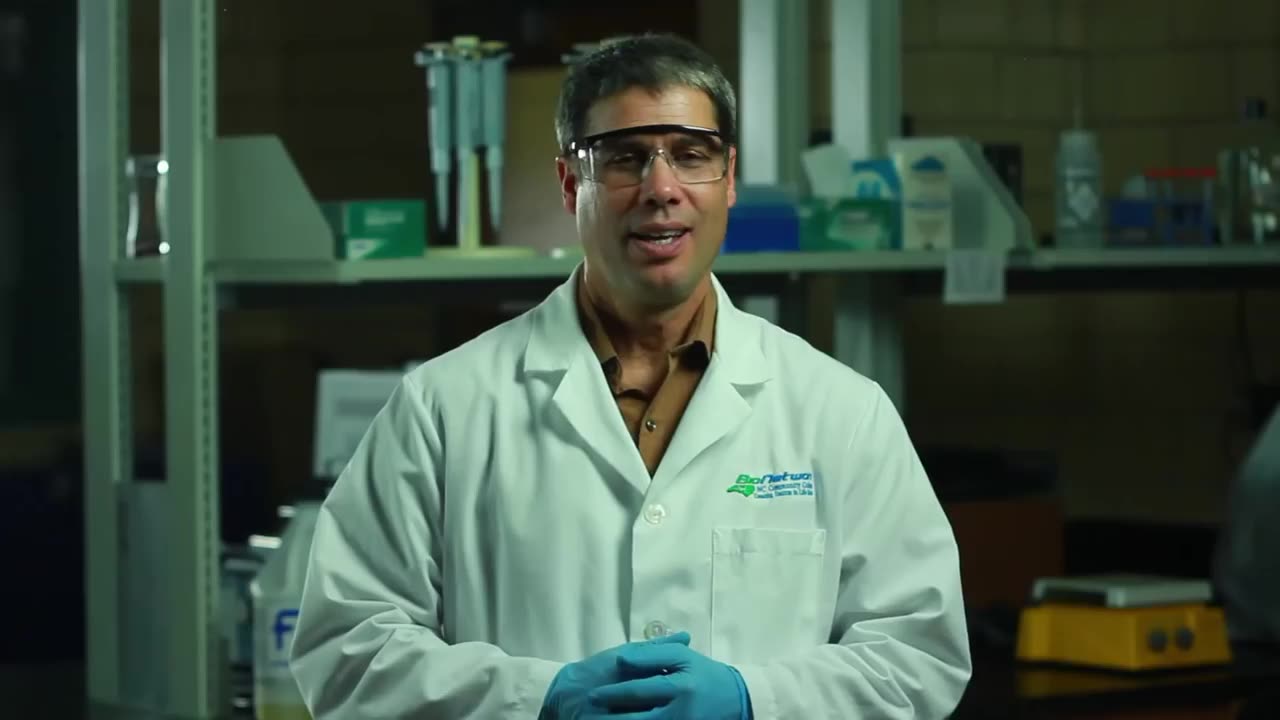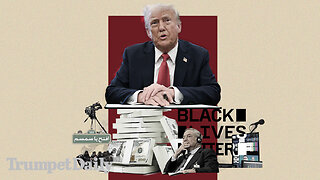Premium Only Content

Safe Chemical Handling _ Lab Safety Video Part 5_2
Creating a **"Safe Chemical Handling – Lab Safety Video (Part 5.2)"** involves visually demonstrating best practices for handling chemicals in laboratory settings. Here's a detailed script outline you can use for the video:
---
### **Video Title:**
**"Safe Chemical Handling – Lab Safety (Part 5.2)"**
---
### **1. Introduction**
- **Scene**: A laboratory with a presenter in full PPE (lab coat, gloves, goggles).
- **Narration**:
- "Welcome to Part 5.2 of our Lab Safety series: Safe Chemical Handling. In this video, we’ll cover the essential practices for handling chemicals safely to protect yourself, your colleagues, and the environment."
---
### **2. Personal Protective Equipment (PPE)**
- **Scene**: A close-up of PPE items being worn correctly.
- **Key Points**:
- Wear safety goggles to protect your eyes.
- Use chemical-resistant gloves and check for tears or damage before use.
- Lab coats or aprons are mandatory to prevent skin contact.
- Closed-toe shoes protect feet from spills.
- **Narration**:
- "Always wear the appropriate PPE. Inspect your equipment before every use, and replace any damaged items immediately."
---
### **3. Chemical Labeling and Identification**
- **Scene**: Various labeled chemical containers, emphasizing hazard symbols.
- **Key Points**:
- Read labels and Safety Data Sheets (SDS) before handling any chemical.
- Look for key information like hazard symbols, handling instructions, and emergency measures.
- **Narration**:
- "Never use a chemical from an unlabeled container. Labeling ensures everyone knows what they’re handling and how to do so safely."
---
### **4. Handling Techniques**
- **Scene**:
- Demonstration of correct pouring techniques (e.g., acid into water, not water into acid).
- Using pipettes, tongs, or other tools to avoid direct contact.
- **Key Points**:
- Use fume hoods for volatile or hazardous substances.
- Never mix chemicals unless the procedure is verified as safe.
- **Narration**:
- "Use tools and equipment to minimize direct contact with chemicals. Always work in a well-ventilated area to prevent inhalation of fumes."
---
### **5. Spill Prevention and Cleanup**
- **Scene**: A mock spill and cleanup using a spill kit.
- **Key Points**:
- Use secondary containment trays to prevent spills.
- Clean up spills immediately using the proper absorbents and neutralizers.
- Dispose of waste according to lab protocols.
- **Narration**:
- "Act fast to manage spills safely. Always have a spill kit nearby and know the cleanup procedure for the chemicals you’re working with."
---
### **6. Chemical Storage**
- **Scene**: A properly organized storage cabinet with segregated chemicals.
- **Key Points**:
- Store chemicals according to their compatibility (e.g., acids separate from bases, flammables in fire-rated cabinets).
- Keep reactive chemicals in a cool, dry place away from direct sunlight.
- **Narration**:
- "Safe handling starts with safe storage. Follow compatibility charts and use proper storage conditions for every chemical."
---
### **7. Waste Disposal**
- **Scene**: Properly labeled waste containers and disposal steps.
- **Key Points**:
- Segregate chemical waste by type (e.g., organic, inorganic, corrosive).
- Label all waste containers clearly.
- Never pour chemicals down the sink unless specifically allowed.
- **Narration**:
- "Disposal is just as important as handling. Follow your lab’s waste management policies to protect the environment and comply with regulations."
---
### **8. Emergency Response**
- **Scene**: Demonstration of using an eyewash station, emergency shower, and fire extinguisher.
- **Key Points**:
- Know the locations of safety equipment.
- In case of chemical exposure, rinse immediately with water and seek medical attention.
- **Narration**:
- "In an emergency, every second counts. Familiarize yourself with safety equipment and procedures."
---
### **9. Recap and Best Practices**
- **Scene**: Presenter summarizing the key points with a checklist displayed on-screen.
- **Checklist**:
1. Wear proper PPE.
2. Read labels and SDS.
3. Use proper tools and techniques.
4. Prevent and manage spills.
5. Store and dispose of chemicals safely.
6. Be prepared for emergencies.
- **Narration**:
- "By following these practices, you can minimize risks and ensure a safe working environment."
---
### **10. Closing**
- **Scene**: The presenter standing by a safety poster.
- **Narration**:
- "Thank you for watching. Stay safe and keep learning. For more lab safety tips, check out the rest of our series."
---
Would you like to expand this outline into a full script or need visuals for the video?
-
 3:41:30
3:41:30
I_Came_With_Fire_Podcast
15 hours ago🔥USAID SCANDAL | MA-GAZA | Cartel VIOLENCE Ramps Up🔥
51.9K6 -
 7:57:34
7:57:34
SpartakusLIVE
9 hours agoShadow BANNED, but we PARTY ON || Friday Night HYPE
59.6K1 -
 2:00:53
2:00:53
Omar Elattar
7 hours agoGRANT CARDONE: “Will I Run for Governor?” | Trump EXPOSED | Bitcoin | $500 Billion Crisis!
41.3K7 -
 46:48
46:48
Glenn Greenwald
10 hours agoGlenn Takes Your Questions On Gaza, USAID, and More | SYSTEM UPDATE #403
79.6K48 -
 56:42
56:42
Candace Show Podcast
14 hours agoBecoming Brigitte: One Coincidence Too Many | Ep 3
164K171 -
 3:14:38
3:14:38
Nerdrotic
14 hours ago $18.13 earnedDisney Plus's Complete FAILURE! Fantastic Four Trailer, MCU Phase 5 Reveal | Friday Night Tights 340
147K45 -
 1:00:58
1:00:58
The StoneZONE with Roger Stone
9 hours agoWill RINOs Sink Robert F. Kennedy Jr.'s Confirmation? | The StoneZONE w/ Roger Stone
39.1K4 -
 1:15:19
1:15:19
Edge of Wonder
11 hours agoReal Biochip Implants & Havana Syndrome Exposed: Interview With Jesse Beltran
32.9K11 -
 1:00:12
1:00:12
Sarah Westall
11 hours ago10 Billion Trump Lawsuit against CBS 60 Minutes, Ukraine Bio-labs and more w/ John Mark Dougan
49K18 -
 57:07
57:07
LFA TV
1 day agoThe ‘Dictator’ Who Downsizes Government | TRUMPET DAILY 2.7.25 7pm
39.6K7